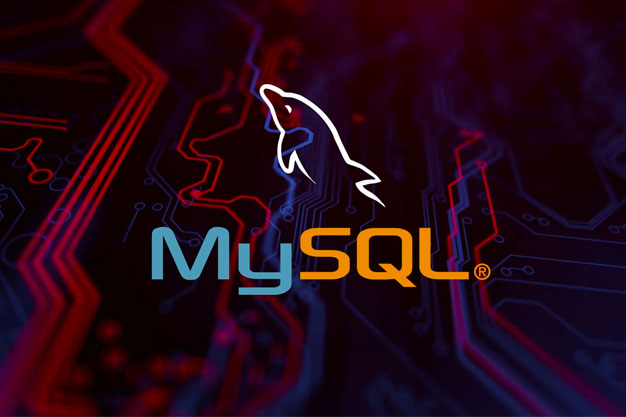ConDBA Learning Centre provides a placement-focused MySQL Database Administration Course that is designed to help you become a skilled and proficient database administrator.
Whether you’re an IT professional looking to upgrade your skills or someone aspiring to enter the lucrative field of database management, this course is your gateway to mastering MySQL.
Why Choose MySQL Database Administration Course?
MySQL is one of the world’s most popular open-source databases, widely used by businesses of all sizes, from startups to enterprises. As the backbone of many web applications and platforms, proficiency in MySQL Database Administration opens up vast career opportunities.
The comprehensive MySQL Database Administration course of ConDBA will equip you with the essential skills to install, configure, secure, and optimize MySQL databases.
What You Will Learn
In this MySQL Database Administration Course, you will cover key topics, including:
-
- Introduction to MySQL: Understanding relational databases and MySQL architecture.
- MySQL Installation and Configuration: Step-by-step guide to setting up MySQL on various platforms.
- Database Design and Management: Best practices for creating efficient and scalable databases.
- User Management and Security: Learn how to manage users, roles, and set up robust security measures for data protection.
- Backup and Recovery: Techniques for regular backups and effective disaster recovery strategies.
- Performance Tuning and Optimization: Fine-tune your MySQL database for better performance and scalability.
- Replication and Clustering: Set up and manage MySQL replication and clusters for high availability.
Our course offers a balanced mix of theoretical knowledge and practical hands-on experience, ensuring that you gain real-world skills essential for a career in MySQL database management.
MySQL DBA Course Details – Topics Covered
Below is the detailed list of topics covered in the ConDBA’s MySQL Database Administration Course.
1. Introduction
-
- Overview of MySQL
- History of MySQL
- The Main Features of MySQL
- Basics of Linux Commands
2. MySQL Installation
-
- Linux OS Installation
- Installing MySQL Server on Linux
- How to Start, Stop, and Restart the Server
- How to Check the MySQL Status and Configuration File
- System Databases
- System Tabes & Dictionary Views
- MySQL Architecture
3. Storage Engines with Simple Examples
-
- The InnoDB Storage Engine
- The MyISAM Storage Engine
- The MEMORY Storage Engine
- The CSV Storage Engine
- The ARCHIVE Storage Engine
- The BLACKHOLE Storage Engine
- The MERGE Storage Engine
- The FEDERATED Storage Engine
- Workbench Installation
4. Tablespace Management
-
- Create Tablespace
- Alter Tablespace
- Drop Tablespace
5. MySQL User Management
-
- Creating Users
- The User Tables
- Renaming Users
- Changing Passwords
- Granting Privileges
- Create SSL Users
- Dropping Users
6. MySQL Server Logs
-
- Error Log
- General Log
- Slow Log
- Binary Log
- Relay Log
7. Database Backup Methods
-
- Using MySQLdump for Backups
- Dumping Data in SQL Format
- Backups
- Restore
- Binary Log Recovery
- Percona XtraBackup Installation on MySQL Server
8. Percona Server
-
- Percona Overview
- Percona Server Installation
- Percona XtraBackup Installation
- Percona Features
- Configuration of XtraBackup
- Taking Full Backup
- Taking Incremental Backups
- Restoring / Recovering Full Backups and Incremental
- Partial Backups
- XtraBackup Installation on MySQLServer
9. Performance Tuning – Partitioning
-
- Overview of Partitioning in MySQL
- Partitioning Types
- RANGE Partitioning
- LIST Partitioning
- HASH Partitioning
- KEY Partitioning
- Obtaining Partitioned Information
- Modifying and Removing Partitions
10. Managing Multiple Instances
-
- Installing MySQL Server from Generic Binaries
- Setting Up Multiple Data Directories
- Running Multiple MySQL Instances on Linux
- Managing Multiple MySQL Servers
11. Upgrading MySQL
-
- MySQL Server 5.7 to MySQL Server 8
12. Installing MySQL Server 8.0 Enterprise
-
- New Features
- Differences Between 5.7 & 8.0
13. Scaling and High Availability
-
- Types of Replication
- Master-Slave Configuration
- Master-Master Configuration
- Adding Slave to Master – Master Setup
- Multi-Master Replication
- GTID Replication
- Replication Troubleshooting
14. Performance Tuning
-
- DBA Performance Tuning Summary
-
- What is running slow on my server?
- Why are my queries running slow?
- How to fix slow-running queries?
-
- DBA Performance Tuning Summary
-
- MySQL PT Parameters
-
- MyISAM Key Cache
- InnoDB PT Parameters & Important Variables
-
- MySQL PT Parameters
15. Configuring InnoDB
-
- The InnoDB Buffer Pool
-
- Managing InnoDB Data and Redo Log Files
-
- Change the location of the ibdata file
- Adding 2 ibdata files
- Change the position of log files
-
- Managing InnoDB Data and Redo Log Files
-
- Increase the redo log files with 4 or 6
- Memory allocation for InnoDB
- Turn off InnoDB
16. About Locking & Issues
-
- Locking Methods
- Deadlock
- Table Locks
17. Optimization & Indexing
-
- About Constraints
- Types of Indexes
- Explain Plan Querying
- Indexing Strategies for High Performance
- Index Maintenance
- Indexing Check List
- Analyze Table
- Optimize Table
18. Performance Schema
-
- Monitors Server Events
- Current & History
- Performance Reports
- InnoDB Statistics
19. MySQL Monitoring Tools
-
- Percona Monitoring and Management (PMM)
- Idera Monitoring
20. Resume Preparation, Q & A, and Real-time Job Support for Job Seekers
Who Should Enroll?
This course is perfect for:
-
- Aspiring Database Administrators: Start your journey in the world of database management with a focus on MySQL.
- IT Professionals: Expand your expertise in MySQL to advance in your career.
- Developers: Gain insight into the backend of database systems to improve your development work.
Why Study with ConDBA?
-
- Expert Instructors: Learn from certified MySQL database administrators and industry experts with years of experience.
- Assistance: Clear your course queries anytime during the course duration with our support.
- Certification: Upon completion, you’ll receive a MySQL Database Administration Certification to validate your expertise.
MySQL Database Administration Course – Career Opportunities
With businesses increasingly relying on data-driven decision-making, the demand for skilled MySQL database administrators continues to rise. Upon completing this course with ConDBA, you will be qualified for roles such as:
-
- MySQL Database Administrator
- Database Manager
- SQL Developer
- Systems Administrator
Check MySQL Database Administrator Jobs available on Indeed, Dice job portals
Enroll Today and Start Your MySQL Database Administration Course Journey
Don’t miss this opportunity to become a certified MySQL database administrator. Enroll in our MySQL Database Administration Course today and take the next step in your career.
Who Will Teach You?
With over 12 years of hands-on experience in the tech industry, I’ve had the privilege of working with databases like MySQL, MariaDB, PostgreSQL, and more. I’ve helped top companies keep their databases running smoothly, securely, and efficiently.
Now, I’m excited to share my knowledge with you through these comprehensive online courses. My mission is to equip you with the skills you need to excel in the IT world and become a successful IT professional. Let’s embark on this journey together!




